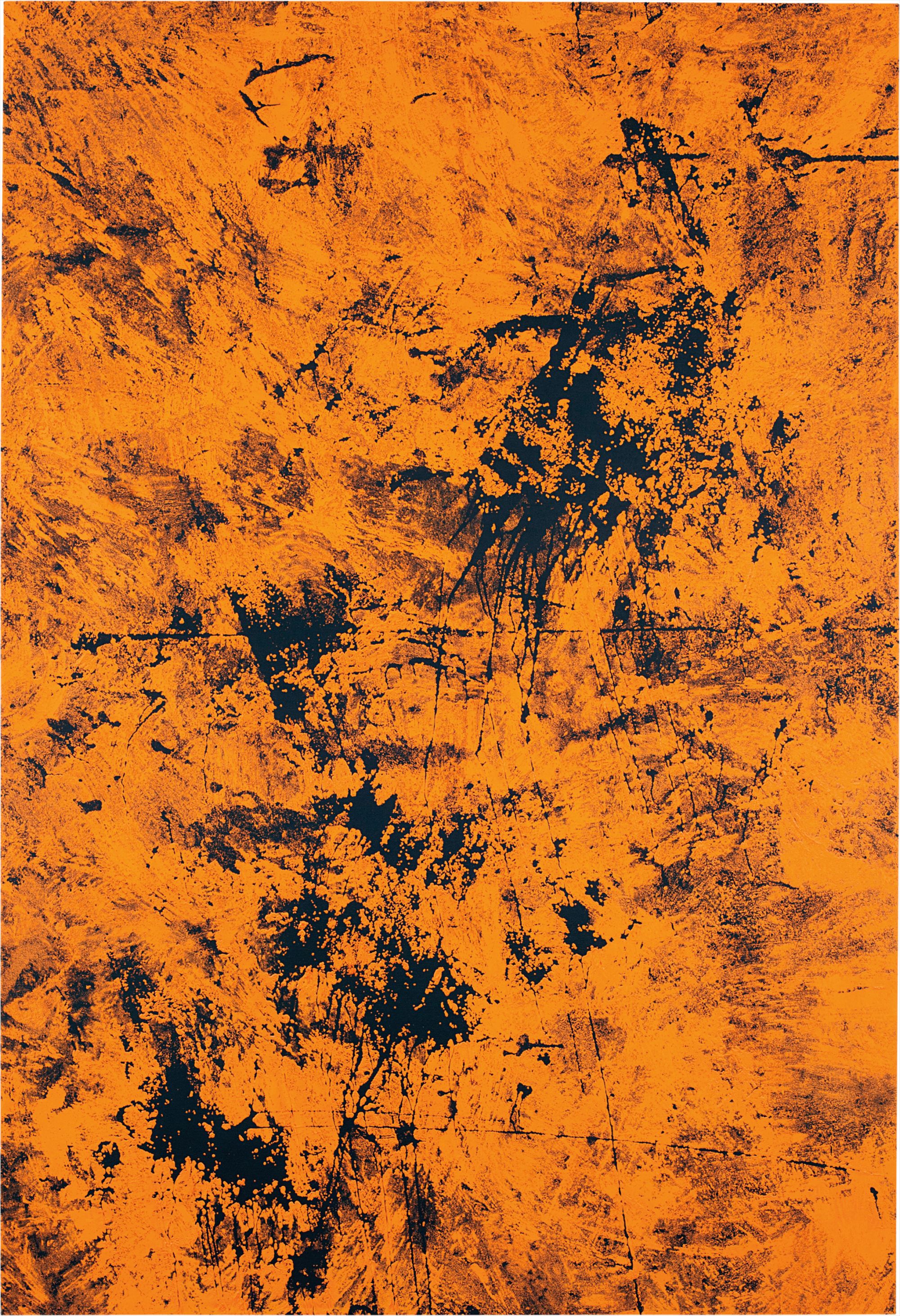

10
Rudolf Stingel
Untitled
Full-Cataloguing
Rudolf Stingel’s persistent pursuit of the boundaries of painting is unparalleled by any other contemporary artist’s. By exploring an artwork’s productive means and its relationship to the space it inhabits, Stingel calls upon the viewer to directly interact with the object and reconsider the definition of the process of painting. To Stingel, a true painting is not simply the result of moving a brush over a piece of canvas, however well, but the result of careful observation. Painting should be used as a means of observing and understanding reality in order to fashion a new one. This elevated notion is both elusive and profoundly simple. Concentrating on formal elements of the artistic process such as color, surface and gesture, his work acknowledges and exposes the challenges faced by modernist painting. “Stingel creates a transitive way to recede from abstraction into the subject and to push the subject into a different kind of time.” (F. Bonami, ed., "Painting of Paintings for Paintings," in Rudolf Stingel, exh. cat., Chicago, 2007, pp. 13-14)
In the present lot, Untitled, of 1996-97, the canvas is composed of undiluted oil paint, creating a visually-heightened surface tension which departs from Stingel’s earlier multi-layered transparent works. In works from this series, his process is initiated by applying a dense layer of paint across the entire canvas. He then places gauze that has been sprayed in paint directly on the surface. The gauze is later eliminated from the work, leaving only the imprint of paint behind. In Untitled, the canvas has been coated in an eye-catching hazard-sign orange and overlaid with jet black painted gauze; upon removal of the gauze the orange and the black have mingled and the swatches of black paint are ethereal yet explosive in their depths of negativity – a veritable collection of cosmic black-holes manifested in paint.
Stingel has created a highly activated composition that dazzlingly sweeps across the canvas. While the surface appears to have been created by a performative act, akin to Pollock’s splashes of paint, it is instead a carefully negotiated process, perhaps more comparable to the screenprinting of Pop Art. Though Stingel’s works vary in medium—from Styrofoam to carpet—and in process, they are nevertheless identified as “paintings” because of their unique painterly surfaces. Interestingly, in each, his process seems to be a contradiction of sorts, an addition of negatives. As opposed to layering paint on paint, swathed by de Kooning or squeezed and scratched by Twombly, Stingel very intentionally builds his paintings by adding negativity – whether by stomping out Styrofoam or, as in this case, by adding these shadows of paint applied with gauze. “Each painting is an act of rebellion, but also one of the many parts of an ongoing revolution to free painting from the tyranny of mundane representation or color field annihilation.” (F. Bonami, ed., "Painting of Paintings for Paintings," in Rudolf Stingel, exh. cat., Chicago, 2007, p. 16)
Gaining exploratory knowledge from each series of works he creates, Stingel is consistently beginning anew, though the memory of past painted experiences remains evident. As Bonami writes, “This is why Stingel’s work cannot be analyzed with an autopsy but instead needs to be seen as a series of connections, a chain reaction of possible paintings created to produce a comprehensible body of ideas and feelings…each work contains all the rest of all the other works, their memory, their struggle to remain attached to each other as part of the DNA of the artist.” (F. Bonami, ed., "Painting of Paintings for Paintings," in Rudolf Stingel, exh. cat., Chicago, 2007, p. 16). Stingel confounds notions of beauty and artistic process, conflating the boundaries of painting, sculpture and architecture in a diverse oeuvre. Prescient and complex, Stingel’s Untitled, 1996-97 is an important exploration of the practical and theoretical limits of art.
Rudolf Stingel
Italian | 1956Rudolf Stingel came to prominence in the late 1980s for his insistence on the conceptual act of painting in a context in which it had been famously declared dead. Despite the prevailing minimalist and conceptual narrative of the time, the Italian-born artist sought to confront the fundamental aspirations and failures of Modernist painting through the very medium of painting itself. While his works do not always conform to the traditional definitions of painting, their attention to surface, space, color and image provide new and expanded ways of thinking about the process and "idea" of painting. Central to his multifarious and prolific oeuvre is an examination of the passage of time and the probing of the fundamental questions of authenticity, meaning, hierarchy, authorship and context by dislocating painting both internally and in time and space. Stingel is best known for his wall-to-wall installations, constructed of fabric or malleable Celotex sheets, as well as his seemingly more traditional oil-on-canvas paintings.